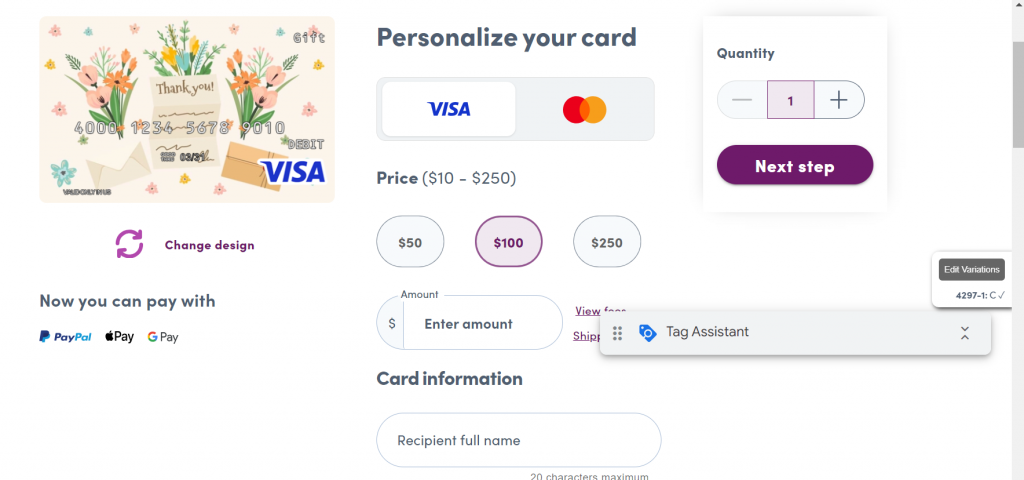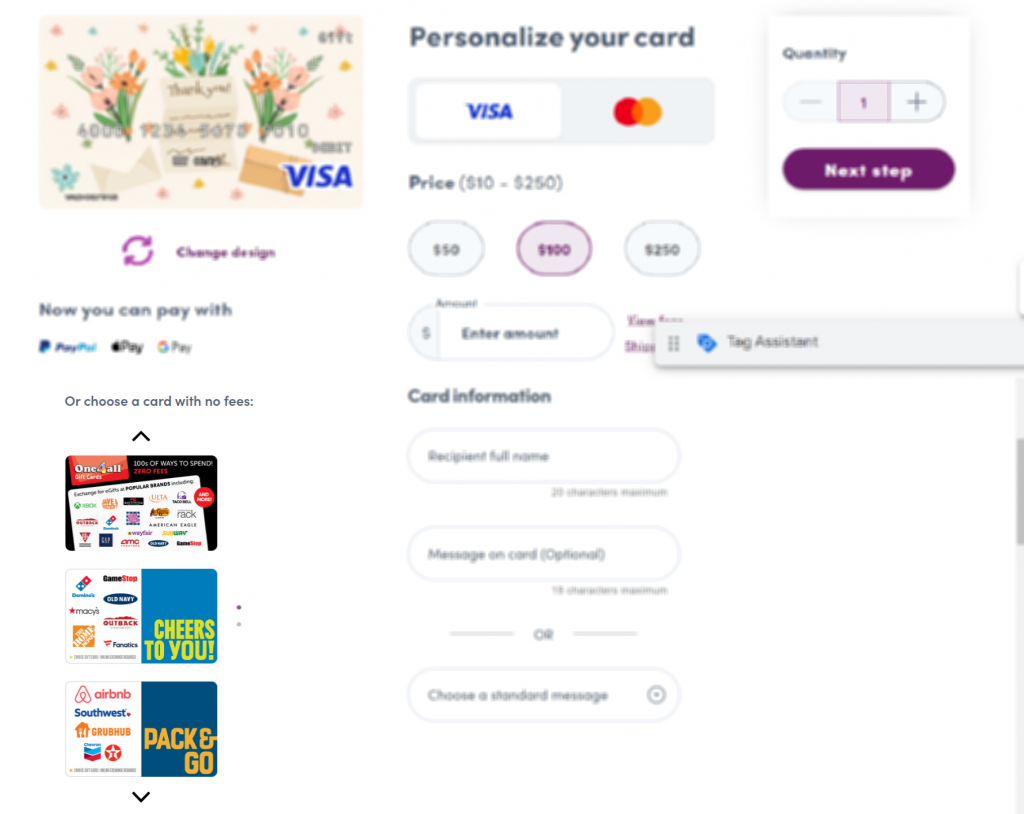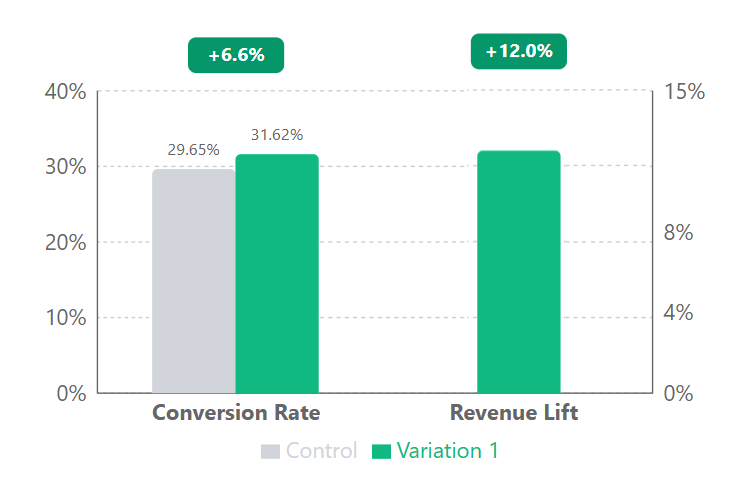Cross-sell Optimization Boosts E-commerce Conversion Rate By 6.6%


Users were abandoning product pages when specific cards didn't meet their needs, without exploring alternatives. Our team implemented and tested vertical "offramp" navigation against horizontal carousels, providing relevant alternatives at decision points.
We identified decision paralysis as the core issue. Our hypothesis was straightforward but powerful: adding clearly visible alternative card options as "offramps" on product detail pages would reduce abandonment and provide users with more relevant options.
Our team developed two distinct navigation approaches to test:
Both variations included intuitive navigation controls that matched the site's existing design language, focusing on popular gift card categories.
Our experiment targeted all visitors viewing predesigned product pages and compared three variations: the control (standard product page with no offramp navigation), Variation 1 (vertical display of alternatives below the main product), and Variation 2 (horizontal carousel of alternatives). Variation 1, with its clean vertical layout of alternative products, emerged as the clear winner, delivering a 6.6% conversion lift over the control.



Let's break down the results:
| Metric | Control | Variation 1 | Lift |
|---|---|---|---|
| Users | 2,772 | 2,821 | - |
| Transactions | 822 | 892 | - |
| Conversion Rate | 29.65% | 31.62% | 6.6% |
| Revenue Lift | - | - | 12.0% |
The vertical layout's success stems from two key conversion principles: reduced cognitive load and natural user scanning patterns. By presenting alternatives in a clean, vertically-aligned format, we made product comparison intuitive while keeping users within the purchase funnel.
Our data confirmed that simplicity drives results in navigation design. The 10% increase in revenue per user demonstrated that strategic alternative placement not only prevents abandonment but also guides users toward higher-value options. This matches established UX research showing that thoughtful choice architecture significantly impacts e-commerce performance.
Want to see how our approach to navigation design could boost your conversion rates? Let's talk about your specific e-commerce challenges.
Appendix: Detailed Test Parameters and Statistical Analysis
Test Parameters
| Parameter | Details |
|---|---|
| Device Targeting | All devices (desktop, tablet, and mobile) with responsive designs for each variation |
| Browser Targeting | All major browsers were included in the test |
| User Segments | All user segments without specific targeting parameters |
| Page Scope | Limited to predesigned gift card product detail pages, not including personalized card creation pages or open-loop virtual cards |
| Test Duration | 30 days |
| Participation Rate | 80% |
| Sample Size | 5,593 users |
Statistical Analysis
| Metric | Value |
|---|---|
| Confidence Level | 94% |
| Z-score | -1.60 |
| P-value | 0.0553 |
| Conservative Lift Estimate | 3.7% |
 Field Notes
Field Notes